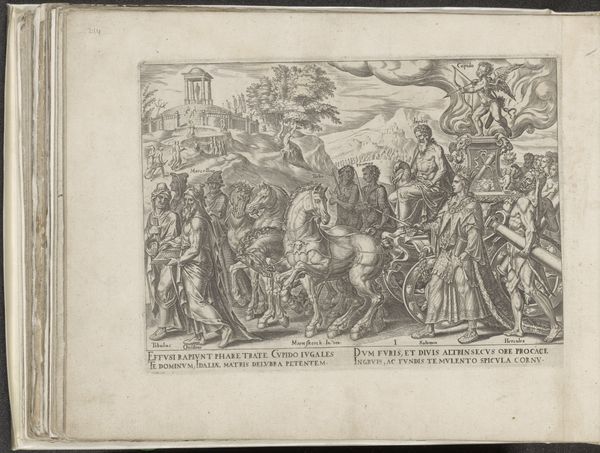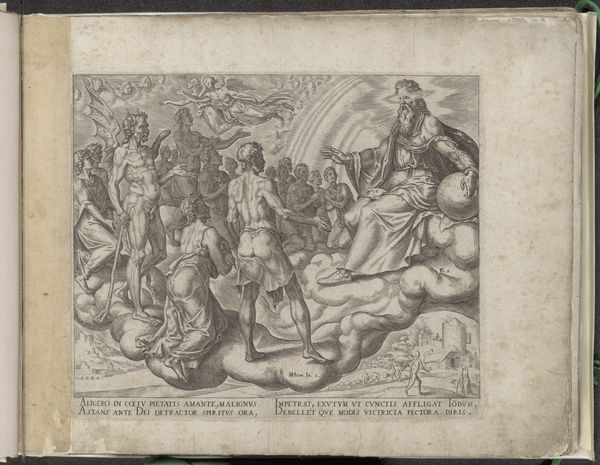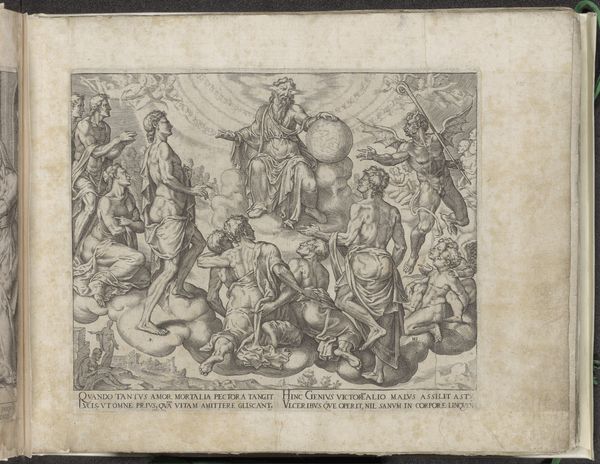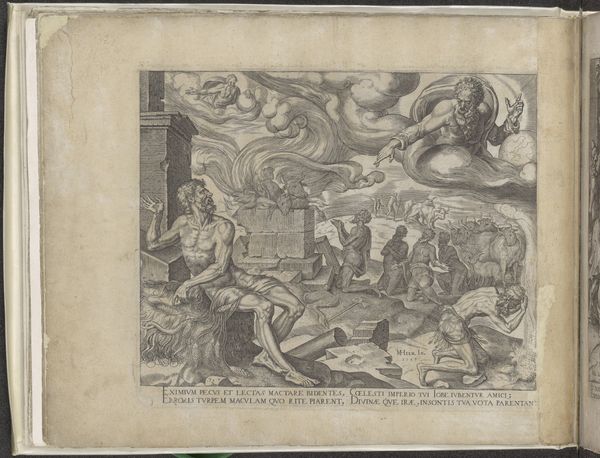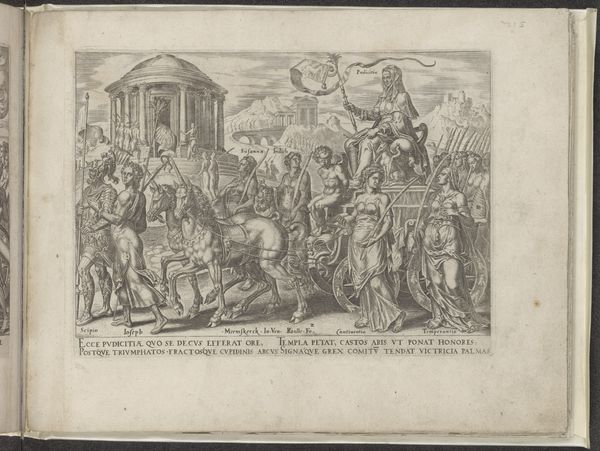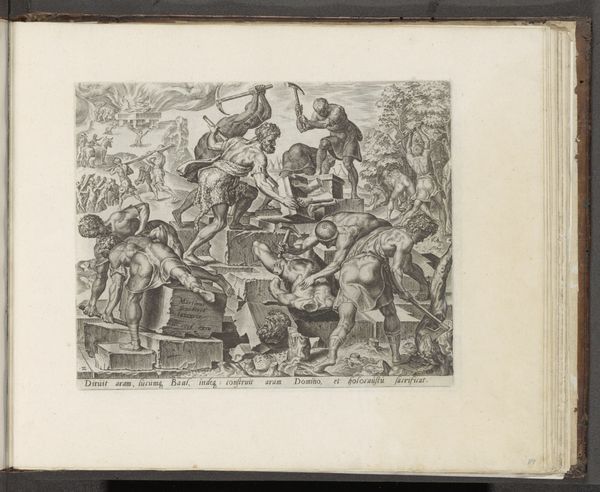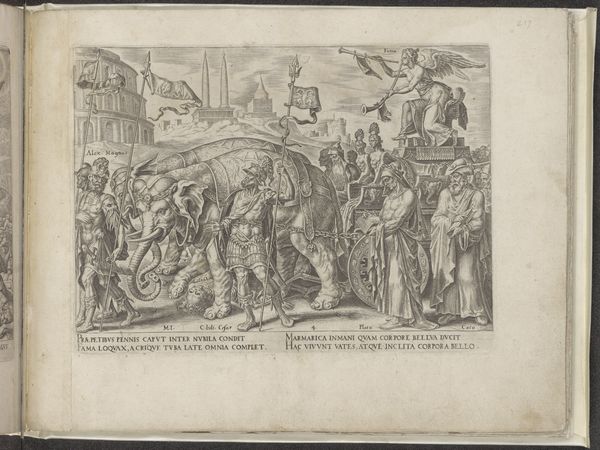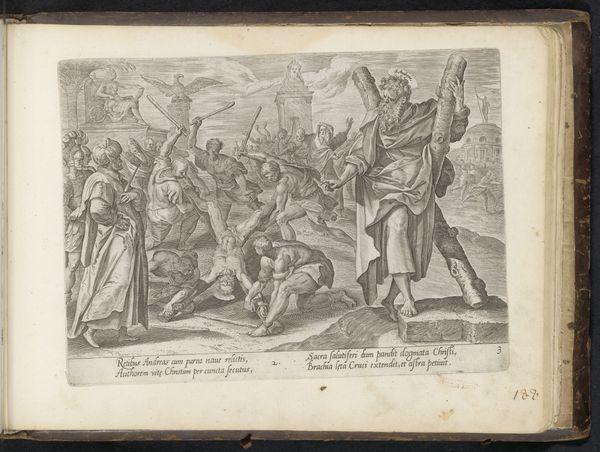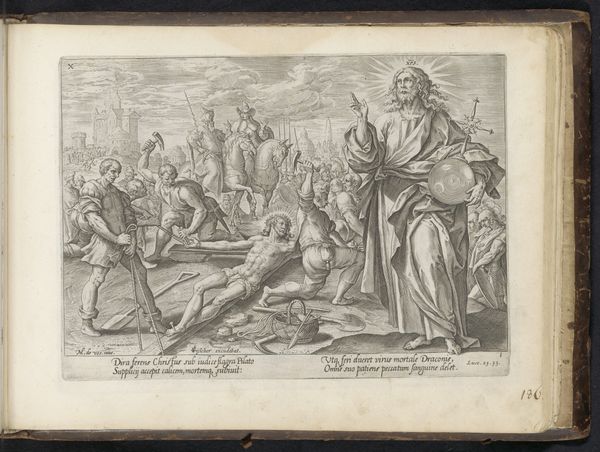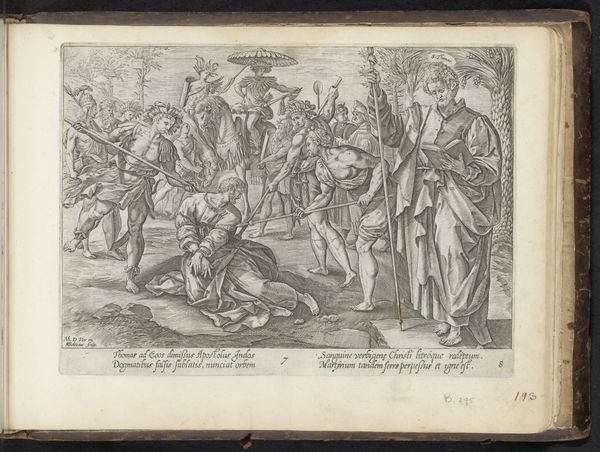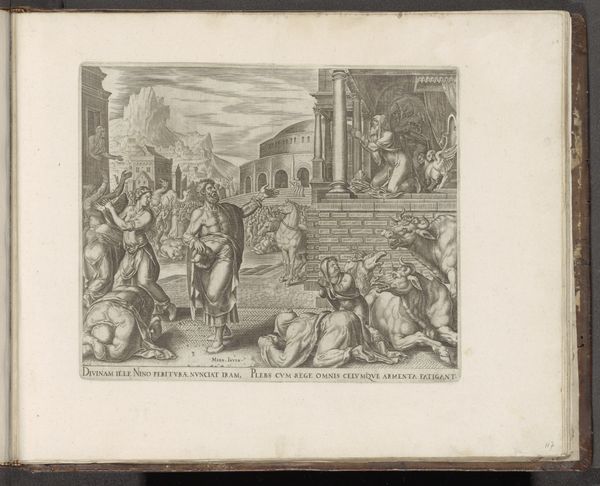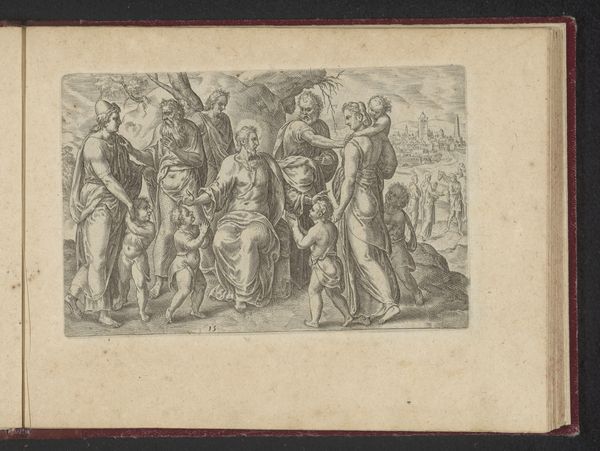
print, engraving
#
allegory
# print
#
mannerism
#
figuration
#
line
#
history-painting
#
engraving
Dimensions: height 194 mm, width 265 mm
Copyright: Rijks Museum: Open Domain
Philips Galle made this print, Triomf van de Tijd, sometime before his death in 1612. The medium is engraving, a painstaking process of incising lines into a metal plate, inking it, and then pressing it onto paper. Look closely, and you can see how the precise, deliberate nature of the engraving process mirrors the print’s subject: the relentless, mechanical passage of time. Each tiny mark on the plate required a conscious decision, mirroring the way time accumulates into irreversible moments. The allegorical scene is filled with figures and symbols, all meticulously rendered with the engraver’s burin. Time, enthroned and winged, presides over a chariot pulled by stags, symbols of swiftness. The wheels of the chariot are, notably, gears, underscoring the sense of an unstoppable mechanism grinding forward. The social context is also relevant. Prints like these were luxury items, a product of skilled labor, and a symbol of status. The precise lines and allegorical subject matter spoke to a culture of refinement and intellectualism. Engraving, in this sense, was not just a technique, but an embodiment of the values of the time.
Comments
No comments
Be the first to comment and join the conversation on the ultimate creative platform.
